
Édouard Manet was a French modernist painter. He was one of the first 19th-century artists to paint modern life, as well as a pivotal figure in the transition from Realism to Impressionism.
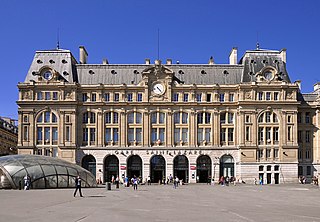
The Gare Saint-Lazare, officially Paris Saint Lazare, is one of the seven large mainline railway station terminals in Paris, France. It was the first train station built in Paris, opening in 1837. It mostly serves train services to western suburbs, as well as intercity services toward Normandy using the Paris–Le Havre railway. Saint-Lazare is the third busiest station in France, after the Gare du Nord and Gare de Lyon. It handles 290,000 passengers each day. The current station building opened in 1889 and was designed by architect Juste Lisch; the maître d'œuvre was Eugène Flachat.

Nana is a novel by the French naturalist author Émile Zola. Completed in 1880, Nana is the ninth installment in the 20-volume Les Rougon-Macquart series.
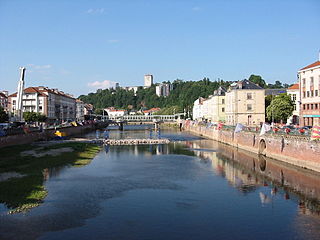
Épinal is a commune in northeastern France and the prefecture of the Vosges department.

Le Déjeuner sur l'herbe – originally titled Le Bain – is a large oil on canvas painting by Édouard Manet created in 1862 and 1863.

Olympia is an 1863 oil painting by Édouard Manet, depicting a nude white woman ("Olympia") lying on a bed being attended to by a black maid. The French government acquired the painting in 1890 after a public subscription organized by Claude Monet. The painting is now in the Musée d'Orsay, Paris.
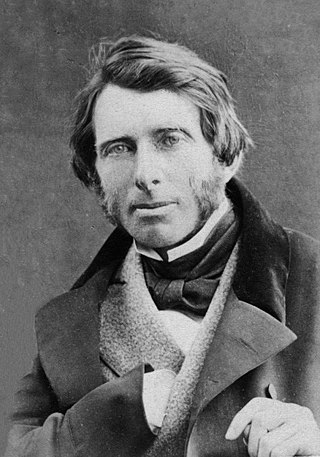
An art critic is a person who is specialized in analyzing, interpreting, and evaluating art. Their written critiques or reviews contribute to art criticism and they are published in newspapers, magazines, books, exhibition brochures, and catalogues and on websites. Some of today's art critics use art blogs and other online platforms in order to connect with a wider audience and expand debate.

Japonisme is a French term that refers to the popularity and influence of Japanese art and design among a number of Western European artists in the nineteenth century following the forced reopening of foreign trade with Japan in 1858. Japonisme was first described by French art critic and collector Philippe Burty in 1872.
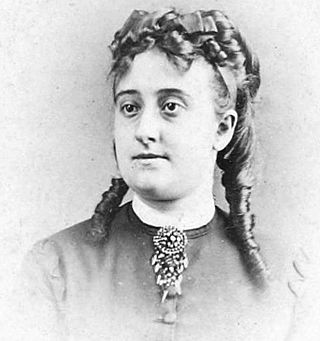
Eva Gonzalès was a French Impressionist painter. She was one of the four most notable female Impressionists in the nineteenth century, along with Mary Cassatt (1844–1926), Berthe Morisot (1841–95), and Marie Bracquemond (1840–1916).

Édouard Glissant was a Martinican writer, poet, philosopher, and literary critic. He is an influential figure in Caribbean thought and cultural commentary and Francophone literature.
Events from the year 1861 in art.
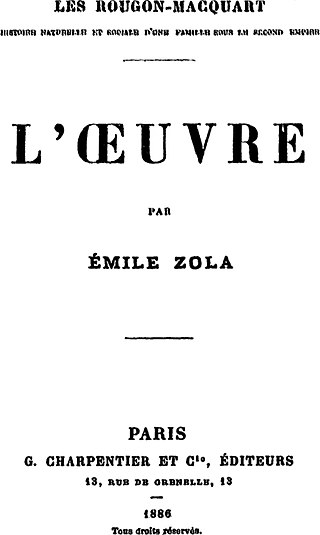
'L'Œuvre(The Masterpiece)' is the fourteenth novel in the Rougon-Macquart series by Émile Zola. It was first serialized in the periodical Gil Blas beginning in December 1885 before being published in novel form by Charpentier in 1886.

Médan is a village in the Yvelines department, Île-de-France region, in the northwestern suburbs of Paris, France, about 25 km from the capital. Inhabitants of Médan are called Médanais.

The Fifer or Young Flautist is a painting by French painter Édouard Manet, made in 1866. It is usually kept in the Musée d'Orsay, Paris.
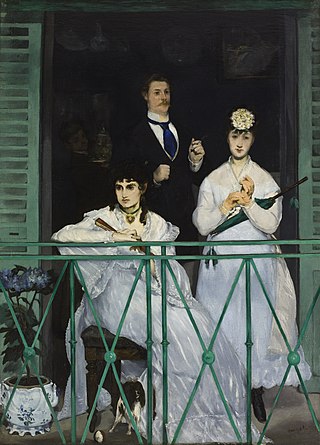
The Balcony is an 1868–69 oil painting by the French painter Édouard Manet. It depicts four figures on a balcony, one of whom is sitting: the painter Berthe Morisot, who married Manet's brother Eugène in 1874. In the centre is the painter Jean Baptiste Antoine Guillemet. On the right is Fanny Claus, a violinist. The fourth figure, partially obscured in the interior's background, is possibly Léon Leenhoff, Manet's son.

Jean-Baptiste-Antoine Guillemet was a French renowned landscape painter and longtime Jury member of the Salon des Artistes Francais. He was one of the first 19th-century artists to paint modern life, and a pivotal figure in the transition from Realism to Impressionism.

A Studio at Les Batignolles is an oil-on-canvas painting by French Impressionist painter and lithographer Henri Fantin-Latour, created in 1870. It depicts the Batignolles Group at the studio of Édouard Manet in the Batignolles Quarter. The painting was exhibited at the Salon in Paris in 1870.
Prostitution in Impressionist painting was a common subject in the art of the period. Prostitution was a very widespread phenomenon in nineteenth-century Paris and although an accepted practice among the nineteenth century bourgeoisie, it was nevertheless a topic that remained largely taboo in polite society. As a result, Impressionist works depicting the prostitute often became the subject of scandal, and particularly venomous criticism. Some works showed her with considerable sympathy, while others attempted to impart an agency to her; likewise some work showed high-class courtesans, and others prostitutes awaiting clients on the streets. In addition to the sexual revulsion/attraction the figure of the prostitute stirred, she functioned as a sign of modernity, a clear sign of the entanglement of sex, class, power and money.

Bullfight is an 1865-1866 painting by Édouard Manet, now in the Musée d'Orsay in Paris. It was produced after the artist's trip to Spain in 1865 and forms part of his Spanish period (1862-1867).

Portrait of Clemenceau is an 1872 painting by Édouard Manet of the French statesman Georges Clemenceau in the Kimbell Art Museum in Fort Worth, Texas.























